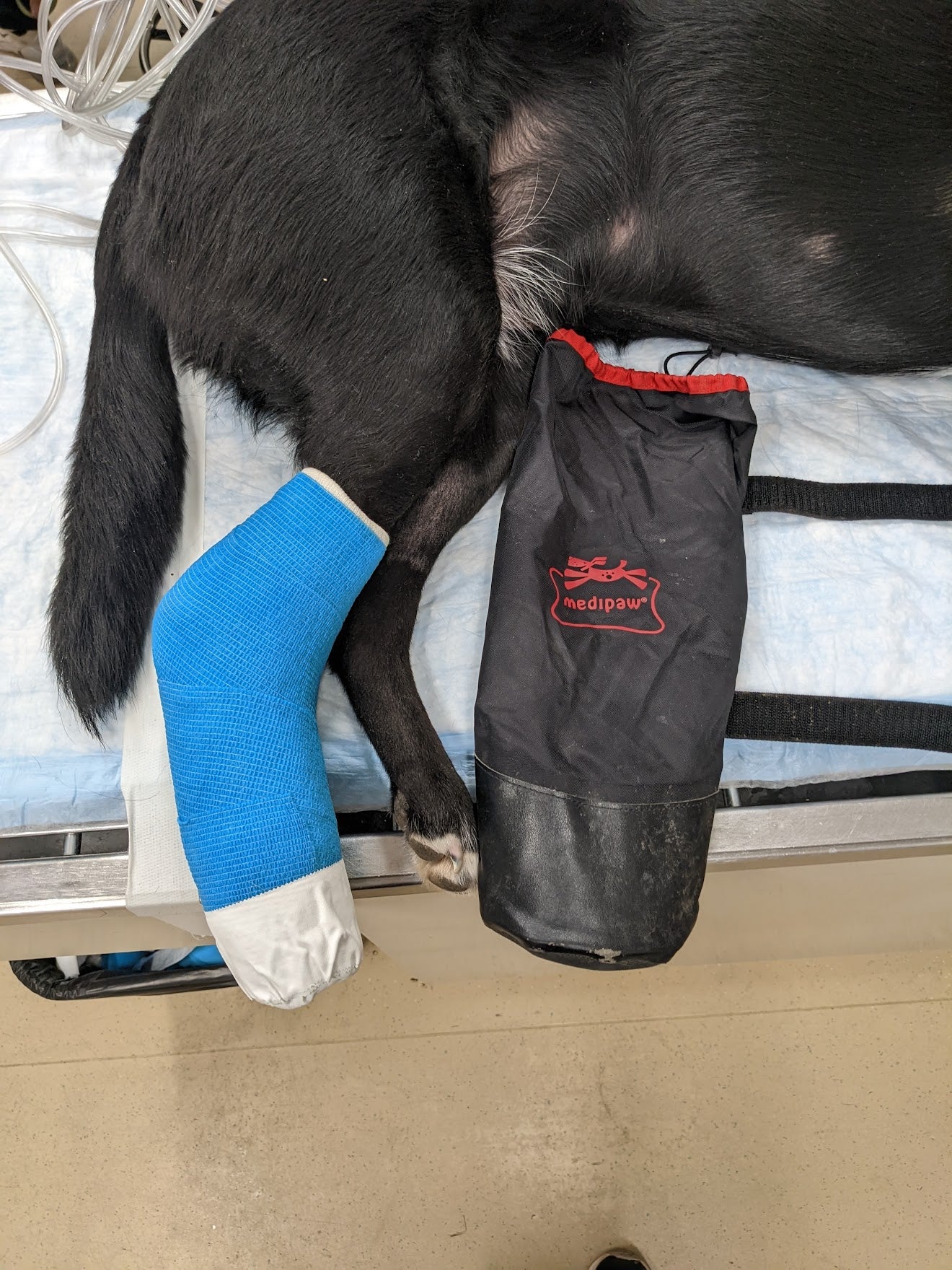SPICA Splint
A Spica splint is a type of external coaptation used to immobilize the shoulder, elbow, or hip joint in the extended position. It’s most commonly applied to support injuries or post-operative repairs involving the proximal forelimb or hindlimb, such as luxations, fractures, or tendon/ligament repairs. This splint extends over the body and is anchored to the torso, providing rigid stabilization while restricting movement of the affected limb.
Purpose and Application
Spica splints are used when complete immobilization of the upper limb is required. Common indications include:
- Shoulder luxations or instability
- Elbow luxations
- Humeral fractures
- Post-op stabilization of tendon or ligament repair
- Medial patellar luxation (severe cases) or hip luxation (less common in small animals)
This technique is particularly helpful when a standard splint or bandage wouldn’t adequately prevent motion at the proximal joints, which are difficult to restrict with regular bandaging alone.
Construction
- Padding and Support Layers: Begin with a Modified Robert-Jones bandage or appropriate padding on the limb for comfort and compression.
- Rigid Support: A splint rod or fiberglass cast material is placed laterally (or occasionally medially), running from the paw or hock past the joint and across the torso, extending over the lateral thoracic wall or abdomen. This extension is what provides the immobilization effect.
- Securing the Splint: The splint is fixed in place with conforming layers (like VetWrap or Elastikon), then anchored to the torso with bandage wraps or straps, often reinforced with adhesive tape to prevent slipping.
- Positioning: The limb must be held in extension during application, and care should be taken to ensure no pressure points develop along the body or at the limb-torso junction.
Advantages
- Excellent immobilization of the upper limb or proximal joints
- Prevents recurrence of luxations or instability during healing
- Can avoid surgery in some select cases with stable reductions
- Customizable to fit the patient’s anatomy and injury
Considerations
- Requires experience and precision to apply correctly
- Must be regularly monitored for slipping, pressure sores, or bandage failure
- Can be uncomfortable or bulky, especially for small patients or cats
- Rechecks are essential to ensure proper fit and continued effectiveness

Recommended Product
MediPaw bandage covers are waterproof, breathable protective sleeves designed to keep bandages clean, dry, and intact—especially during outdoor use. They're easy to slip on, reusable, and help extend the life of a bandage while preventing contamination, moisture, and chewing.
Want to see how these bandages are made?
Unlock access to the largest bandaging video library available and watch step-by-step how each bandage is applied correctly and effectively!



